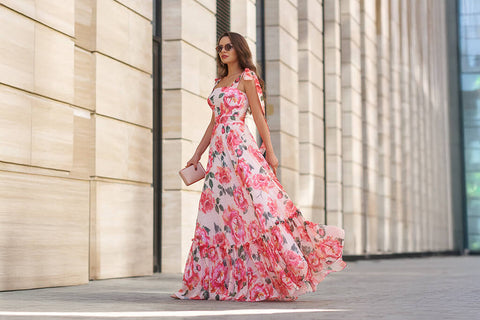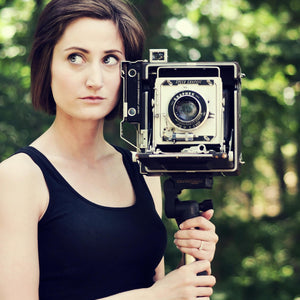- Lightroom Presets
- Mobile Presets
-
Photoshop
-
Learn
-
Support
-
Install
- Best Sellers
- Blog
By Anna Gay on | No Comments

There are so many different techniques to help you achieve more realistic skies when using sky and cloud overlays. In this tutorial I will show you how to blend your overlays with the original image, and will assume you already have a working knowledge of layer masks, and your own method for applying sky overlays to your images.
If you need extra help with layer masks and adding skies in general, please watch our Cloud Overlays Tutorial, then come back!
To get started, drag and drop your sky overlay. The one I am using is from the "Vivid Skies" Cloud & Sky Overlays collection.
NOTE: Both of our sky overlay collections, Vivid Skies Overlays and Painted Skies Sunset Overlays, come with revolutionary applicator actions that do all of this hard work for you!
You can instantly replace an overcast or blown out sky, blur the sky, fade the horizon, make it warmer or cooler and much more all with a quick click of your mouse. We have listed all the steps below for you to add your skies the old fashioned way but if you want to save some serious time, come see what all the hype is about.

Once you have added your sky overlay, reduce the opacity of the sky layer so you can see the horizon in your original image. Using the horizon as your guide, use Perspective Transform to fit the sky overlay to the horizon.
In most cases, a horizon will not be the same depth all the way across. The center of the horizon, or the vanishing point, will be farther away than the sides of the image, making what's in the center of the image appear smaller. Think of how a road recedes into the horizon and completely vanishes the further away it goes, that's exactly what should happen with a sky overlay, just not as noticeable!
You can also use Free Transform to stretch the overlay. The goal is to make the overlay wider at the top and smaller at the bottom in order to give the illusion of distance:

Add a Layer Mask to your sky overlay, and use a brush with a soft edge to erase where you do not want the sky to appear. This doesn't need to be totally perfect, because we will blend the erased edges in the next steps:

Now, with an even larger brush with a low opacity, start gradually erasing the overlay along the horizon. Look at the horizon in the original image, and try to make the overlay mimic the original.
For this image, the original horizon gradually fades from one shade of blue to the next, so I am erasing more heavily at the horizon line, and then more lightly as I work towards the clouds. This will soften the horizon and make it appear more natural. Just start lightly and build with each stroke:

Okay, now I'm going to give you a super helpful tip! This is going to totally change the way you edit sky overlays.
Since the clouds are really far in the distance here, and the depth of field in the lens makes everything more than just a couple of feet around our beach boy very soft and blurry, it makes sense that the clouds would be a little blurry, too, right?
You can blur your skies in a number of ways, but the Lens Blur Filter is particularly detailed:

The settings for the Lens Blur filter will vary from image to image. The goal is to blur the clouds so that details are difficult to see, but you can still tell they are clouds. Be careful, it can be easy to over-blur! Also, be sure to bump up the highlight brightness so that when you apply the blur, your clouds will still retain their brightness:

Now you can make some finishing touches to make the clouds blend even further. You can adjust the Levels, Curves, and Brightness/Contrast to lighten the cloud overlay. Here, I made a basic Levels adjustment:

Again, the intended outcome is always to make overlays look as natural as possible. Look at your original image and observe how it differs from the one with your overlay.
Here is a summary of everything we just did:
As I mentioned before, the Actions included in both the Vivid Skies Cloud & Sky Overlays Collection and the Painted Skies Sunset Sky Overlays Collection will simplify this entire sky replacement process and save you A LOT of time when you use the revolutionary sky applicator and edting actions that are included! Be sure to check it out!




Anna Gay is a portrait photographer based in Athens, GA and the author of the dPS ebook The Art of Self-Portraiture. She also designs actions and textures for Photoshop. When she is not shooting or writing, she enjoys spending time with her husband, and their two cats, Elphie and Fat Cat.

Comments